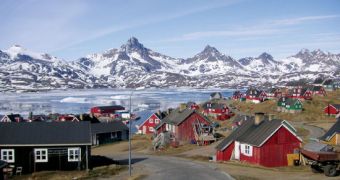Greenland is about to get a lot more crowded than it presently is, at least as far as vegetation goes. Scientists say that, by the year 2100, trees and bushes will have virtually no issues setting up camp in this part of the world.
For the time being, just four different species of trees and several species of bushes that are well-equipped to handle harsh weather conditions grow in Greenland.
What's more, these plants can only be found in southern regions and do not cover extensive patches of land.
Thus, a large portion of Greenland presently is no more and no less than a barren ice sheet.
However, as local temperatures continue to increase, some 44 species of trees and bushes that are indigenous to North America and Europe will find that living conditions in Greenland suit them quite well.
Hence the fact that they'll thrive and eventually come to form forests, EurekAlert tells us. As Professor Jens-Christian Svenning puts it, “Greenland has the potential to become a lot greener.”
“Forests like the coastal coniferous forests in today’s Alaska and western Canada will be able to thrive in fairly large parts of Greenland, with trees such as Sitka spruce and lodgepole pine,” the Professor further details.
It goes without saying that such changes in local vegetation will upset local ecosystems, and that plant and animal species that are indigenous to Greenland will be the ones that will end up losing.
As far as Professor Jens-Christian Svenning and his fellow researchers are concerned, the only good news is that people living in this part of the world might benefit greatly from the predicted changes in local vegetation.
“This will provide new opportunities for the population of Greenland. For example, we see that people use wood wherever there is forest.”
“This could also create new opportunities for activities such as hunting and the commercial exploitation of berries. Forest and scrub will also reduce erosion and affect water run-off,” the Professor argues.

 14 DAY TRIAL //
14 DAY TRIAL //